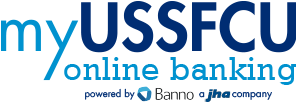Raising Money-Smart Kids: Age-by-Age Financial Lessons
Published: April 9, 2025

April is Credit Union Youth Month, and there's no better time to focus on helping your child learn smart money habits that will last a lifetime. As a parent, you’re your child’s first and most influential financial educator. By introducing money skills early and reinforcing them often, you’ll give them the confidence to make sound financial decisions now and in the future.
Here’s a breakdown of age-appropriate money lessons to help you raise money-smart kids from preschool through high school.
Ages 3–5: Money Basics and Delayed Gratification
What to teach:
- Recognize coins and bills
- Understand that money is used to buy things
- Practice waiting and saving for a goal
How to teach it:
- Use play money or real coins to help them identify different denominations
- Let them “pay” at the store with your help
- Start a simple piggy bank and set a small savings goal, like buying a sticker or toy
Tip: Use clear jars so kids can see their money grow—it makes saving visual and exciting.
Ages 6–9: Earning and Goal Setting
What to teach:
- The difference between needs and wants
- That money is earned through work
- How to set short-term savings goals
How to teach it:
- Offer an allowance tied to age-appropriate chores
- Help them split money into jars or envelopes: Save, Spend, and Share
- Use shopping trips to discuss choices—why one item might be a better deal than another
Tip: Keep it positive! Mistakes made now are learning opportunities for later.
Ages 10–13: Budgeting and Banking Basics
What to teach:
- How to track spending
- How to plan for larger purchases
- The basics of bank accounts
How to teach it:
- Introduce a basic budget using paper or an app
- Help them open a youth savings account at USSFCU
- Talk about saving for a goal, like a video game, and mapping out a plan to reach it
Tip: Let them make some spending decisions on their own—even if it means learning from a little buyer’s remorse.
Ages 14–18: Income, Credit, and Real-Life Practice
What to teach:
- How to manage a paycheck
- Understanding credit, interest, and debt
- Saving for future expenses, like a car or college
How to teach it:
- Help them open a teen checking account and learn how to use a debit card
- Review a pay stub together and explain taxes and deductions
- Walk through how credit works and what it means to borrow responsibly
- Encourage saving a portion of all income (from jobs, gifts, etc.)
Tip: Get them involved in real financial decisions—like planning a budget for school shopping or tracking expenses for a summer trip.
Celebrate Credit Union Youth Month with USSFCU!
Limited-Time Offer: $50 for Your Child’s Future!
This April, we’re celebrating Credit Union Youth Month by helping kids jumpstart their savings.
Open a USSFCU Youth Savings Account between April 1–30, 2025 and use promo code YOUTH50 to receive a $50 bonus deposit into your child’s new account.
Open a Youth Account Today
Terms and conditions apply.
More Tools for Every Age & Stage
Looking for even more ways to support your child’s financial journey?
Visit our Best Life Wellness platform for free resources, interactive lessons, and age-based guides for teaching kids about money.
Article content is provided for informational purposes only.



